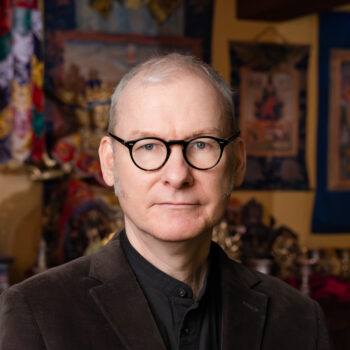Patron and PainterSitu Panchen and the Revival of the Encampment Style
Rubin Museum
150 W. 17th St., NYC

Much like religious princes, the Karmapas—heads of the Karma Kagyu, one of Tibet’s principal schools of Buddhism—traveled for centuries in large monastic tent encampments. These courts, which included portable temples, a community of monks, and skilled artists and artisans, produced their own distinctive painting style, known as the Encampment style (Gardri). The painter Namkha Tashi founded the style in the court of the Ninth Karmapa (1555–1603) in central Tibet. He looked to Indian figural models and placed them in landscapes inspired heavily by the works of Chinese court painters.


